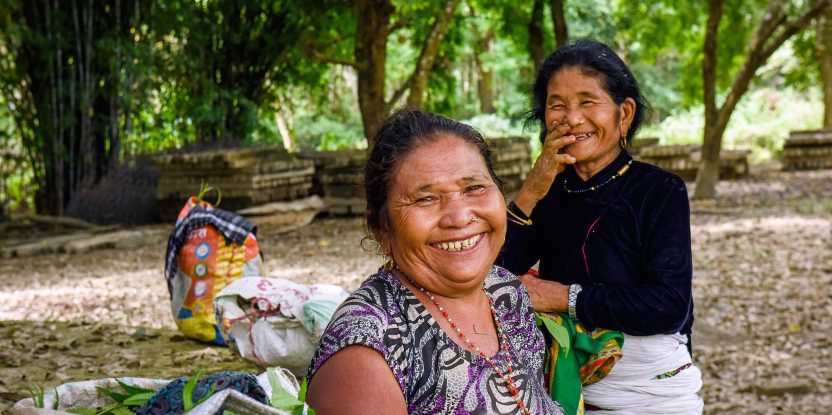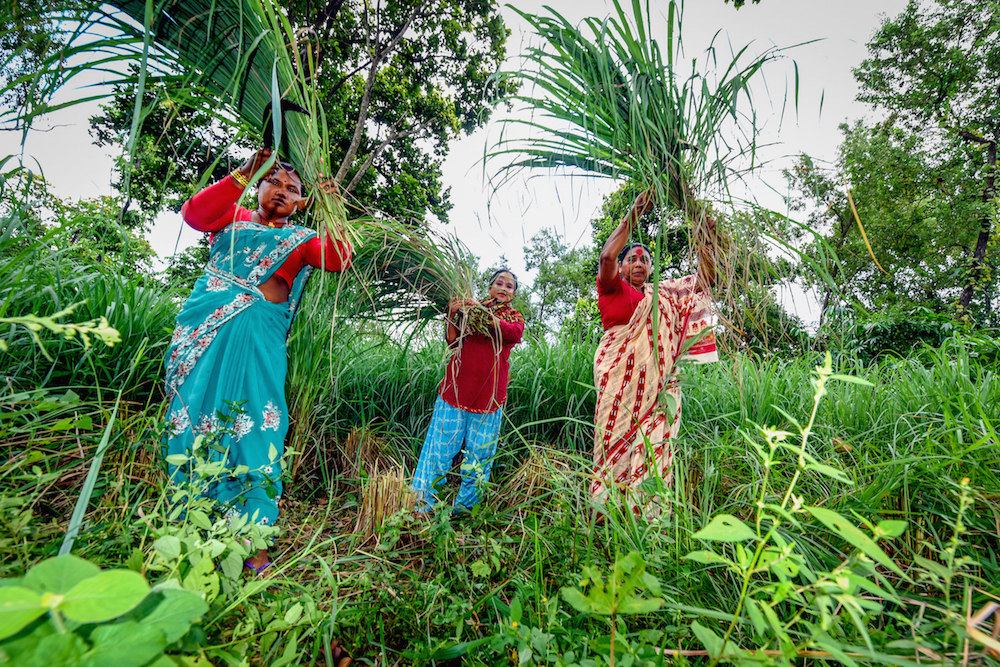
Forest landscape restoration has gained a high political profile internationally, but still faces the challenge of how best to involve local communities to ensure the success of programs on the ground. This is an issue that is all the more challenging given the diversity of environmental and socio-political contexts around the globe.
Property rights, for instance, are widely accepted as a crucial starting point for restoration — but policymakers struggle to clarify and secure rights over forests. In view of this, researchers at the Center for International Forestry Research (CIFOR) turned to successful FLR programs in China, Nepal and Ethiopia to identify lessons that could be applied elsewhere.
Specifically, they examined how the devolution of access and management rights to local communities provided incentives for them to invest in restoration activities. The study, included in a Special Issue of International Forestry Review on forest landscape restoration, focuses on people managing forests in mountainous and hilly areas.
The Special Issue was launched on the sidelines of the Global Landscapes Forum in Bonn, Germany.
By drawing examples from dramatically different national contexts, the comparative study illustrates “the diversity of paths that the devolution of rights took, but how it had similar results,” says CIFOR senior scientist and lead author Peter Cronkleton.
All three cases of forest tenure reform led to the decentralization of forestry institutions and the partial devolution of management rights to local forest-dependent people, Cronkleton says. This resulted in different co-management systems that reflect national and local contexts.
However, the general outcome was the same: local households that gained clear and secure benefits from restoration efforts not only invested in management activities, but also helped to protect the resources from overuse and excluded outsiders. Ultimately, this led to an increase in forest cover and improvements in livelihoods.
CO-MANAGEMENT SYSTEMS
In Nepal, devolution passed rights to community-level user groups controlling nearby remnant forests, while in China’s Changting county, reforms resulted in a varied array of individuals and local groups controlling different types of forest for different purposes, the study notes.
In Ethiopia, a national forest was subdivided to grant control to local organizations representing subgroups from surrounding communities.
“All or most forests in question started as public or collective property within systems that placed strict restrictions on forest access and use for local stakeholders. However, in each case, national agencies or other authorities lacked the capacity or political will to control and enforce restrictions,” the research points out.
This led to forest degradation and deforestation, as various stakeholders “extracted what they could, and there was little incentive to forgo immediate benefits or invest in the resources’ future.” This scenario, common to the various case studies, started changing following tenure reform.
Now, “Nepal is known as a global leader in community-based forest management,” says CIFOR senior scientist Himlal Baral. More than 20,000 Community Forestry User Groups, making up 40 percent of the population, now manage 33 percent of Nepal’s forests.
“Before, locals had a tendency to over-utilize resources,” says Baral. “Today, they have incentives to protect the landscape, and they see restoration as being closely connected to their livelihoods.” From his perspective, this illustrates how the multiple benefits of FLR are key to advancing environmental targets and the Sustainable Development Goals.
In Changting, China, policy reform took a different path. In the study area, collective property rights over forests offered low incentives for restoration. In this case, the key was devolving rights to individual households. Individual forest rights combined with credits and subsidies provided incentives for households, cooperatives and enterprises to invest in FLR.
In Ethiopia, some of the poorest forest-dependent residents organized into user groups under participatory forest management programs (PFM). They were encouraged to develop management plans for lands that were not classified as production or protected forests, and were allowed to extract non-timber products in return.
An estimated 1.5 million hectares of forest are currently under PFM institutions, and an additional two million could be rehabilitated with this mechanism as part of the commitments under the Bonn Challenge.
BETTER FLR PROGRAMS
Indicators of forest devolution success range from an increase in tree cover to reduction in conflicts between local communities and the state, as was the case with the Chilimo PFM program in Ethiopia. Though there were many successes in FLR, the study also points out emerging challenges.
One is whether local communities have ownership over the environmental services produced by their restoration efforts, often by forgoing other benefits, and whether they should be compensated by other stakeholders. “This will be an ongoing question: how to create equitable and efficient systems for having payments for those services,” says Cronkleton.
In co-management systems, communities are required to demonstrate their compliance with forestry regulations. According to Cronkleton, “the tendency to impose more and more elaborate management and reporting requirements can create a disincentive.”
From his perspective, devolving property rights to local actors is as important as including them in determining how the restoration should take place. “Co-management should involve an ongoing negotiation and adaptation to new learnings. It is a process rather than a one-off decision.”
Further research could explore how different ways of devolving rights affect restoration efforts. For now, scientists hope this study will raise awareness among policymakers and practitioners of the need to involve locals when designing rights systems and compliance mechanisms. After all, says Cronkleton, “it is key to the success of the initiative.”
We want you to share Forests News content, which is licensed under Creative Commons Attribution-NonCommercial-ShareAlike 4.0 International (CC BY-NC-SA 4.0). This means you are free to redistribute our material for non-commercial purposes. All we ask is that you give Forests News appropriate credit and link to the original Forests News content, indicate if changes were made, and distribute your contributions under the same Creative Commons license. You must notify Forests News if you repost, reprint or reuse our materials by contacting forestsnews@cifor-icraf.org.


